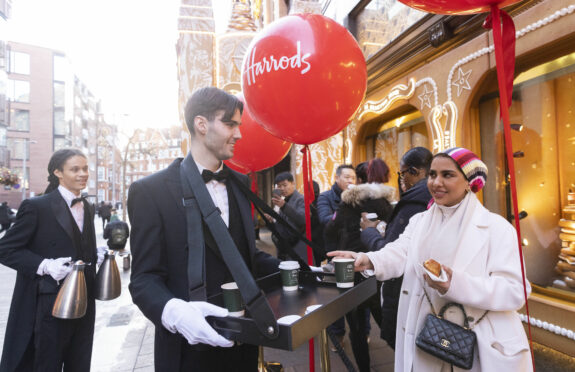
Even with the best intentions, when it comes to buying Christmas gifts we don’t always get it right.
From purchasing the wrong size of jumper to ordering the incorrect colour of phone case, many of us rely on the returns policies of retailers and the ability to swap a present for something more appropriate when required, or get a refund.
In the run-up to the festive season many retailers promoted early shopping to avoid disappointment and encouraged people to buy early.
However, a survey just released by consumer watchdog Which? found that a quarter of people said they had received an unwanted or unsuitable gift the previous Christmas.
When asked what they did with it, one in four admitted they had given it away, one in seven exchanged it for something else from the retailer and fewer than 8% people had returned the item. Less popular ways of getting rid of unsuitable gifts included selling them on an online marketplace, throwing them away, or returning to the present-buyers.
Colin Mathieson, marketing manager at consumer help service Advice Direct Scotland, said it was important for people to understand their rights when it came to returns and refunds, particularly for items purchased during the festive period.
If you find yourself with a gift you don’t want or have bought something that is faulty, first double-check the retailer’s returns policies, which are usually available on its website, or displayed in-store and on receipts.
Individual retailers have their own policies in place, with many opting to process returns as a goodwill gesture, he explained. A retailer is not required to provide a full refund for goods that are unwanted, or if you simply change your mind.
“It is also important to be aware of retailer-specific terms and conditions when making a purchase, but to be mindful that these do not change our statutory rights covered by the Consumer Rights Act,” said Mathieson.
“For most faulty or damaged goods, we have protection provided by the Consumer Rights Act, which states that goods should be of satisfactory quality, with no faults or damage, and the goods should be durable.
“We have additional returns rights when it comes to items purchased online, over the phone, or by mail order under Consumer Contracts Regulations.
“This gives us a cancellation period the moment the order is placed and ends 14 days from the date the goods are received. You then have a further 14 days to notify the retailer you would like to cancel the order to return the goods to them.
“By understanding our rights in advance of purchase we can avoid being caught out – and make the most of our money.”

Enjoy the convenience of having The Sunday Post delivered as a digital ePaper straight to your smartphone, tablet or computer.
Subscribe for only £5.49 a month and enjoy all the benefits of the printed paper as a digital replica.
Subscribe